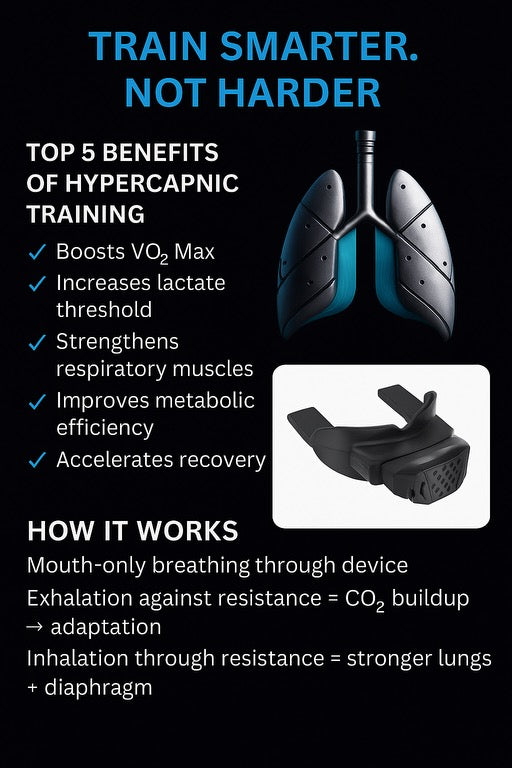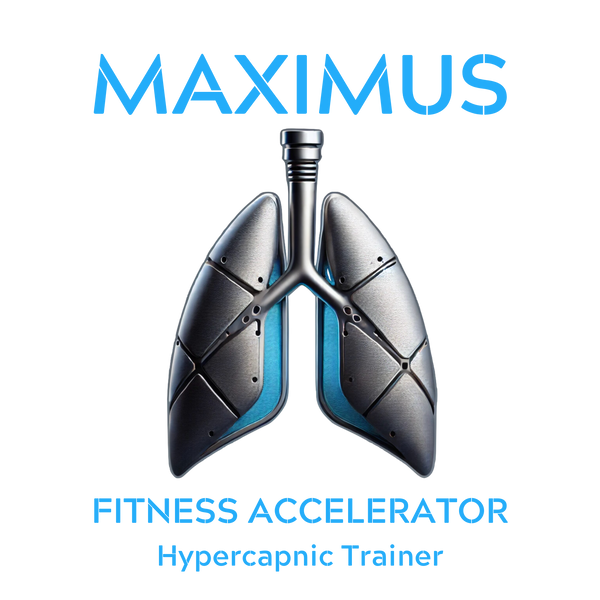
Unlock Your Athletic Potential with Respiratory Muscle Trainers
Share
Unlock Your Athletic Potential with Respiratory Muscle Trainers
Athletes are always looking for ways to gain an edge, whether through advanced training techniques, cutting-edge equipment, or optimized nutrition. One tool that's been gaining traction in recent years is the respiratory muscle trainer (RMT). These devices are designed to strengthen the muscles involved in breathing, offering a range of benefits that can help athletes improve their strength and endurance. But how do these trainers work, and why are they so effective? Let's dive into the physiological benefits of RMTs and explore why athletes should consider incorporating them into their training regimen.
The Basics: What Are Respiratory Muscle Trainers?
Respiratory muscle trainers are devices that provide resistance to breathing, making it more challenging to inhale and exhale. This resistance forces the respiratory muscles, primarily the diaphragm and intercostal muscles, to work harder. Just like lifting weights strengthens your biceps, an RMT strengthens your respiratory muscles.
How Respiratory Muscle Trainers Work
RMTs come in various forms, including inspiratory muscle trainers (IMTs), which focus on the muscles used during inhalation, and expiratory muscle trainers (EMTs), which target the muscles involved in exhalation. Some devices provide both inhalation and exhalation resistance, offering a comprehensive workout for all respiratory muscles.
The principle behind RMTs is simple: by increasing the workload on the respiratory muscles, these devices promote muscle hypertrophy (growth) and endurance. Over time, this leads to more robust, more efficient breathing muscles that can perform better under stress.
The Physiological Benefits of RMTs for Athletes
- Enhanced Respiratory Muscle Strength
- Why It Matters: Stronger respiratory muscles can generate more force, allowing more profound and more efficient breaths. This means more oxygen can be taken in with each breath, which is crucial for aerobic performance.
- How It Helps: Improved respiratory muscle strength can delay the onset of respiratory muscle fatigue, allowing athletes to maintain higher performance levels for longer.
- Improved Endurance
- Why It Matters: Endurance is often limited by the respiratory system's ability to supply oxygen to working muscles. By improving the strength and endurance of respiratory muscles, RMTs can enhance overall endurance capacity.
- How It Helps: Athletes using RMTs have been shown to have improved VO2 max (a measure of aerobic capacity) and longer time to exhaustion during intense exercise.
- Reduced Perception of Breathlessness
- Why It Matters: Feeling less breathless allows athletes to push harder and maintain higher intensities without feeling as tired.
- How It Helps: With regular use of RMTs, athletes often report a reduced sense of breathlessness during high-intensity efforts, which can improve performance in sports requiring sustained efforts, like running, cycling, and swimming.
- Enhanced Recovery
- Why It Matters: Efficient breathing helps to remove carbon dioxide and deliver oxygen more quickly, aiding in faster recovery between intense efforts.
- How It Helps: Improved respiratory function can help athletes recover quickly during intervals or between sets, allowing for more effective training sessions.
- Better Core Stability and Posture
- Why It Matters: The diaphragm is a core muscle, and strengthening can improve overall core stability and posture.
- How It Helps: Enhanced core stability can improve athletic performance by providing a solid foundation for movement and reducing the risk of injury.
How Athletes Can Incorporate RMTs Into Their Training
- Start Slowly: Begin with lower resistance settings to allow your respiratory muscles to adapt. Gradually increase the resistance as your muscles become stronger.
- Consistency is Key: To see significant improvements, use the RMT regularly, ideally 5-7 days a week.
- Integrate with Existing Training: Incorporate RMT sessions into warm-up or cool-down routines. This makes them easier to incorporate into your daily regimen without requiring additional time.
- Monitor Progress: Track your improvements in respiratory muscle strength and endurance. Many RMTs come with built-in monitoring features or companion apps to help you monitor your progress.
Real-World Success Stories
Numerous studies have highlighted the benefits of RMTs for athletes. For example, a study published in the Medicine & Science in Sports & Exercise journal found that endurance athletes who used inspiratory muscle trainers for six weeks experienced significant improvements in inspiratory muscle strength and reduced perceived respiratory effort during high-intensity exercise. Similarly, European Journal of Applied Physiology research demonstrated that competitive cyclists who used RMTs saw improved cycling time trial performance and reduced inspiratory muscle fatigue.
Conclusion
Incorporating respiratory muscle trainers into your training regimen can provide substantial benefits, from enhanced respiratory muscle strength and endurance to reduced breathlessness and better recovery. By strengthening the muscles that power your breathing, RMTs help optimize oxygen intake and delivery, giving you the edge you need to perform at your best. Whether you're a runner, cyclist, swimmer, or participate in any sport requiring sustained aerobic effort, RMTs can help you unlock new levels of athletic performance.
So, consider adding respiratory muscle training to your arsenal to breathe new life into your training routine. Your lungs—and your performance—will thank you.
